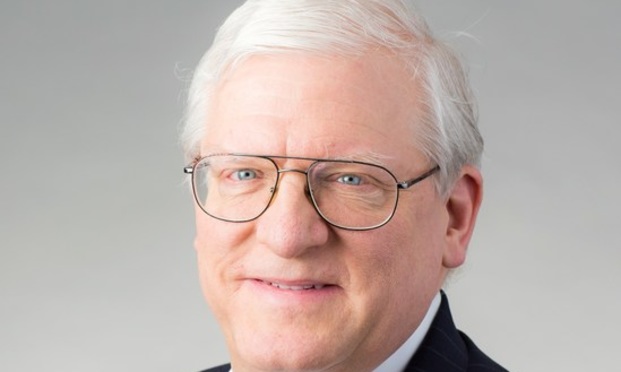Waiver Is Alive and Well in Pa.: High Court Expands Scope
In the past couple of months, the Pennsylvania Supreme Court has decided two waiver decisions of great interest to appellate practitioners. In both cases, the court expanded the scope of waiver.
December 27, 2018 at 01:25 PM
6 minute read
 James Beck of Reed Smith.
James Beck of Reed Smith.
In the past couple of months, the Pennsylvania Supreme Court has decided two waiver decisions of great interest to appellate practitioners. In both cases, the court expanded the scope of waiver.
In Jones v. Ott, 191 A.3d 782 (Pa. 2018), the court addressed the recurrent question of the steps necessary at trial to preserve objections to the trial court's jury instructions. The plaintiff had filed proposed points for charge, but the plaintiff neither objected following an untranscribed charging conference nor after the charge itself. On appeal, the plaintiff's position was that an objection to the charge was adequately preserved “by docketing written proposed points for charge and raising the issue in a post-trial motion.” The plaintiff relied upon Broxie v. Household Finance, 372 A.2d 741 (Pa. 1977), which had held:
“It has long been the law in this commonwealth that in order to preserve for appellate review … a trial court's charge to the jury, the complaining party must submit a specific point for charge or make a timely, specific objection to the charge as given.”
The “disjunctive” language in Broxie had been widely interpreted as finding preservation based solely filing proposed points for charge, “notwithstanding a failure to lodge a specific objection at trial.”
Broxie is no longer the law. Jones rejected the disjunctive approach in favor of the procedure outlined in Pa. R. Civ. P. 227.1, which mandated both pretrial and post-trial preservation, upon express pain of waiver. Because the record in Jones “reflected no objection to the trial court's jury instructions” and nonrecord proceedings could not be considered, the plaintiff failed to preserve an objection to the jury charge pretrial merely by the filing of proposed points for charge.
Further, to allow preservation by filing alone, absent further objection to the trial court's decisions, was contrary to the purpose of the modern waiver rule—to afford the trial court a contemporaneous opportunity to correct error:
“The mere filing of a requested point for charge, standing alone, does not preserve an assertion of trial court error … While inclusion of the proposed points in the record is necessary for preservation, it is not sufficient … Preservation of a jury-charge challenge requires that the trial court has issued a ruling upon the matter … Grounds for a new trial or JNOV “must be raised timely in pretrial proceedings or during the trial, thus affording the court the opportunity to correct the error,” Jones, 191 A.3d at 789 (quoting Explanatory Comment to Rule 227, other rule-related citations and quotation marks omitted).
“Grounds for post-trial relief predicated upon assertedly flawed jury instructions ripen only once the trial court rules upon the matter. The mere filing of proposed points for charge cannot assure a record sufficient to allow meaningful appellate review.”
Thus, both trial and appellate practitioners now have a definitive answer to what had been a perennially question of issue preservation—what sorts of trial level objections must be made to ensure the appealability of issues relating to the jury charge. Practitioners cannot rest on the mere filing of their points for charge. Rather, after Jones v. Ott, it is essential that all objections be pursued before the trial court to an on-the-record resolution.
The second recent Supreme Court waiver decision of note is Stapas v. Giant Eagle, ___ A.3d ___, 2018 WL 6070787 (Pa. Nov. 21, 2018), which dealt with a less common, but even more vexing problem—what to do about errors in a jury verdict that the jury might be able to correct. Like Jones, the court in Stapas opted in favor of requiring more, rather than fewer, trial objections to preserve such issues for appeal. At issue in Stapas was a grossly excessive jury award of future lost wages, on which the jury had not even been charged, and contrary to the judge's instruction to return a single, lump sum verdict. However, the defendant did not object to the award before the jury was discharged. Instead, the defendant presented the issue as a post-trial “weight of the evidence” challenge to the verdict.
The court found waiver in Stapas. Invoking the “contemporaneous objection rule” first enunciated in Dilliplaine v. Lehigh Valley Trust, 322 A.2d 114 (Pa. 1974), the court decided that the issue presented was not a true weight of the evidence challenge.
[Defendant's] challenge was not grounded in the weight of the evidence … A weight of the evidence claim ripens after the verdict because it does not challenge the jury's ability to render a verdict; instead, it contends the jury's resolution of competing evidence was “a miscarriage of justice.”
Rather, the defendant was challenging the existence of any evidence to support the future damages portion of the verdict, (the defendant's “position is that the jury could not award damages for future lost wages as a matter of law”).
The errors being asserted thus, in the opinion of the Pennsylvania Supreme Court, immediately obvious at the time the verdict was entered. The defendant “had multiple opportunities to preserve this ground for post-trial relief during the trial court proceedings but failed to do so.”
When the trial court's tipstaff read the jury's itemized verdict, the defendant had a basis to object because the verdict did not conform to the trial court's instruction to return a single, lump-sum verdict and because the jury awarded damages for future lost wages, a category of damages that the plaintiff was not entitled to as a matter of law. By failing to raise an objection at any point during the trial before the jury was discharged, the defendant waived its challenge to the jury's verdict.
The same error-correcting purpose of Pennsylvania waiver rules that had been evident in Jones also surfaced in Stapas. “If the defendant had objected before the trial court dismissed the jury, it could have required the jury to clarify the verdict … By not objecting to the verdict, defendant deprived the trial court of the opportunity to efficiently correct a trial error.”
If Jones stands for the proposition that counsel must take care to make routine contemporaneous objections to preserve issues relating to jury instructions, Stapas presents an even more difficult lesson in the need to make contemporaneous objections in the more fluid circumstances attending the actual receipt of a jury's verdict. The Supreme Court, in both cases, has made its preference clear that counsel assert objections immediately, rather than withhold them. Counsel are thus twice warned that failure to object, in a situation where, with appellate hindsight, an objection is available to be made, is an invitation for a finding of waiver.
James M. Beck, a member of the Reed Smith life sciences health industry group, focuses his practice on complex personal injury and products liability litigation. He has experience in developing legal defenses, master briefs and dispositive motions in numerous mass torts, and has prepared amicus briefs on behalf of a variety of national organizations.
This content has been archived. It is available through our partners, LexisNexis® and Bloomberg Law.
To view this content, please continue to their sites.
Not a Lexis Subscriber?
Subscribe Now
Not a Bloomberg Law Subscriber?
Subscribe Now
NOT FOR REPRINT
© 2025 ALM Global, LLC, All Rights Reserved. Request academic re-use from www.copyright.com. All other uses, submit a request to [email protected]. For more information visit Asset & Logo Licensing.
You Might Like
View All

Pa. High Court to Decide Whether Flight in a High Crime Area Can Result in an Investigative Stop
6 minute read
Lackawanna County Lawyer Fails to Shake Legal Mal Claims Over Sex With Client
3 minute readTrending Stories
- 1ACC CLO Survey Waves Warning Flags for Boards
- 2States Accuse Trump of Thwarting Court's Funding Restoration Order
- 3Microsoft Becomes Latest Tech Company to Face Claims of Stealing Marketing Commissions From Influencers
- 4Coral Gables Attorney Busted for Stalking Lawyer
- 5Trump's DOJ Delays Releasing Jan. 6 FBI Agents List Under Consent Order
Who Got The Work
J. Brugh Lower of Gibbons has entered an appearance for industrial equipment supplier Devco Corporation in a pending trademark infringement lawsuit. The suit, accusing the defendant of selling knock-off Graco products, was filed Dec. 18 in New Jersey District Court by Rivkin Radler on behalf of Graco Inc. and Graco Minnesota. The case, assigned to U.S. District Judge Zahid N. Quraishi, is 3:24-cv-11294, Graco Inc. et al v. Devco Corporation.
Who Got The Work
Rebecca Maller-Stein and Kent A. Yalowitz of Arnold & Porter Kaye Scholer have entered their appearances for Hanaco Venture Capital and its executives, Lior Prosor and David Frankel, in a pending securities lawsuit. The action, filed on Dec. 24 in New York Southern District Court by Zell, Aron & Co. on behalf of Goldeneye Advisors, accuses the defendants of negligently and fraudulently managing the plaintiff's $1 million investment. The case, assigned to U.S. District Judge Vernon S. Broderick, is 1:24-cv-09918, Goldeneye Advisors, LLC v. Hanaco Venture Capital, Ltd. et al.
Who Got The Work
Attorneys from A&O Shearman has stepped in as defense counsel for Toronto-Dominion Bank and other defendants in a pending securities class action. The suit, filed Dec. 11 in New York Southern District Court by Bleichmar Fonti & Auld, accuses the defendants of concealing the bank's 'pervasive' deficiencies in regards to its compliance with the Bank Secrecy Act and the quality of its anti-money laundering controls. The case, assigned to U.S. District Judge Arun Subramanian, is 1:24-cv-09445, Gonzalez v. The Toronto-Dominion Bank et al.
Who Got The Work
Crown Castle International, a Pennsylvania company providing shared communications infrastructure, has turned to Luke D. Wolf of Gordon Rees Scully Mansukhani to fend off a pending breach-of-contract lawsuit. The court action, filed Nov. 25 in Michigan Eastern District Court by Hooper Hathaway PC on behalf of The Town Residences LLC, accuses Crown Castle of failing to transfer approximately $30,000 in utility payments from T-Mobile in breach of a roof-top lease and assignment agreement. The case, assigned to U.S. District Judge Susan K. Declercq, is 2:24-cv-13131, The Town Residences LLC v. T-Mobile US, Inc. et al.
Who Got The Work
Wilfred P. Coronato and Daniel M. Schwartz of McCarter & English have stepped in as defense counsel to Electrolux Home Products Inc. in a pending product liability lawsuit. The court action, filed Nov. 26 in New York Eastern District Court by Poulos Lopiccolo PC and Nagel Rice LLP on behalf of David Stern, alleges that the defendant's refrigerators’ drawers and shelving repeatedly break and fall apart within months after purchase. The case, assigned to U.S. District Judge Joan M. Azrack, is 2:24-cv-08204, Stern v. Electrolux Home Products, Inc.
Featured Firms
Law Offices of Gary Martin Hays & Associates, P.C.
(470) 294-1674
Law Offices of Mark E. Salomone
(857) 444-6468
Smith & Hassler
(713) 739-1250






